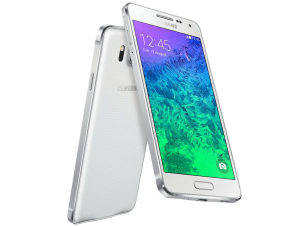Last Updated on September 21, 2024 by Mat Diekhake
 Getting a custom recovery installed is the first step to take when you want to flash custom software on your device all by yourself instead of having a root application, when available, do it for you.
Getting a custom recovery installed is the first step to take when you want to flash custom software on your device all by yourself instead of having a root application, when available, do it for you.
There are a few custom recoveries out there that you still might be able to install on your device, but it’s TWRP that you want whenever it’s there, as it is the only custom recovery image currently being developed to be compatible with future and current ROMs.
Having Team Win’s custom recovery image is going to allow you to take NANDroid backups—partitioned backups that mean you don’t need to backup everything and use up heaps of space; if you only wanted to backup the one partition, then you could do that. These NANDroid backups are the easiest way to backup on Android—including if you were to have root access and use an app such as Titanium Backup—and you have no choice but to backup between flashing ROMs as well, which is why the feature is so good.
In addition, TWRP also allows you to restore an existing backup. So if you were to wipe the system partition accidentally, for example, then you would be able to restore it from this feature, provided that you had created the backup. It also allows for the flashing of zip files: custom ROMs, general mods, rooting files, Google Gapps—you name it, they all get flashed from within the custom recovery image.
How to Install TWRP Recovery on Samsung Galaxy Alpha Using Odin
Note: The Odin flashing tool is really easy to use, but it only works on the Windows operating system. You won’t get the flashing tool to load on a Mac or Linux computer. It doesn’t really matter what version of the Windows operating system that you’re using as long as it is something above Windows XP.
1. Download and install the Samsung USB drivers on the computer if you don’t have them already.
2. Download the TWRP Recovery for the Samsung Galaxy Alpha smartphone from one of the mirror links below that’s for your region:
- Americas: twrp-2.8.1.1-slte.tar
- Europe: twrp-2.8.1.1-slte.tar
3. Download the Odin flashing tool.
It doesn’t matter what version, but the latest is the most up to date so grab that one. Extract the Odin file and then double-click on the Odin executable file (.exe) that is found from within the Odin folder after extraction. You should now have the Odin interface open on the computer and waiting for you to connect to it.
4. Boot the Samsung mobile device into the Download Mode by first powering it down and then rebooting by holding the Volume Down + Home + Power keys at the same time.
5. A yellow warning triangle will come up on the device’s display. At this time you need to press the Volume Up button. You’ll then see the device getting into the Download Mode. It’s then ready for the flashing.
6. When in Download Mode, connect the Samsung mobile device to the computer with the USB cable.
7. If you have installed the USB drivers correctly, the Odin flashing tool should detect your device. You can tell this by observing the ID: COM port lighting up with a color, usually yellow or blue.
It doesn’t matter what color, it’s the lighting up that counts.
8. After the device is picked up by Odin, click on the PDA or AP button, depending on what button your version of the Odin flashing tool has.
9. Navigate to the stock ROM folder and upload the tar.md5 file to this location in Odin.
10. Without changing any of the default settings, click on the Start button in Odin, and the flashing then begins.
11. Wait until Odin shows a Pass message before disconnecting your device.
That’s all.
ARCHIVES
Americas:
- twrp-2.8.1.0-slte.img
- twrp-2.8.1.0-slte.img.asc
- twrp-2.8.1.0-slte.tar
- twrp-2.8.1.0-slte.tar.asc
- twrp-2.8.1.1-slte.img
- twrp-2.8.1.1-slte.img.asc
- twrp-2.8.1.1-slte.tar
- twrp-2.8.1.1-slte.tar.asc
Europe:

August 14, 2022 @ 12:26
Whether we like it or not the software on our devices changes over time. Part of the reason for this is because naturally new features come along over time as well and it makes sense to prioritize things differently and shuffle things around as these new features arrive. No matter how much sense it might make for the majority of people for software to change there will always be part of the userbase who doesn’t like the changes. And if you were to include the other software changes that are more related to just changing things for the sake of it, such as the new text emoji faces that came along for the ride with Android 8.0 Oreo, then the number of people disliking what they’re seeing is going to rise dramatically.
Part of what makes Android such a great operating system is that you don’t have to put up with whatever changes Android developers are choosing to make. If you have a device that has a pretty strong usership (that is has sold a decent quantity of devices), then you should be able to track down at least a few custom ROMs.
Take LineageOS of example: currently the most installed custom ROM in the world and is available for devices made by most well-known smartphone manufacturers, including the likes of Asus, WileyFox, OnePlus, Samsung, Sony, ZTE, YU, Google, HTC, Motorola, Lenovo, Nextbit, OPPO, Xiaomi, and the list goes on and on. Both the version of Android that comes on your device and LineageOS are examples of custom ROMs. Custom ROMs are what you can run after installing a custom recovery image.